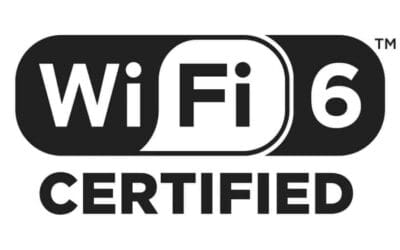As economies worldwide continue to recover from the supply chain failures of 2022, it’s more important than ever for manufacturing companies to leverage RFID solutions to streamline and optimize their processes.
According to a report by Austin Nichols Technical Search, one of the biggest challenges facing the manufacturing industry today is technology deficiencies. Organizations that fail to automate are being passed in the market by those that take advantage of new innovations.
Other challenges include:
- Labor shortages
- Supply chain disruptions
- Inability to meet customer expectations
By upgrading your legacy systems with an RFID solution, you can improve your technology deficiencies and resolve these other roadblocks, too.
The Benefits of RFID
Integrating RFID technology into your manufacturing operations creates an asset tracking and management solution that helps streamline your business. From a broader perspective, RFID tracking provides speed, versatility and real-time data for your daily operations. When you break it down further, the benefits become more evident:
- Improved supply chain accuracy
- Increased production efficiency
- Better equipment maintenance
- More accurate inventory management
These results help you when dealing with labor shortages because they remove the tedious and time-consuming tasks from your personnel so they can focus on more critical tasks.
Types of RFID Types
Before you deploy an RFID solution, you need to determine what type of RFID tags you need for your operations.
Low Frequency (LF) – Operating between 30-300 kHz, LF tags have a short range and limited data transmission. They’re most commonly used in access control cards.
High Frequency (HF) – With a frequency between 3-30 MHz, HF tags have a more extended read range and better memory options. They’re often used for data transfer applications and some ticketing applications.
Ultra-High Frequency – RFID tags that utilize the UHF band typically operate between 860-960 MHz. These tags, which can be either active or passive, have a long-read range, high data transmission rate and a large memory capacity.
For manufacturing, a UHF RFID tag is considered the most effective option.
Planning Your RFID Solution
To deploy an effective RFID solution, you need to gameplan your deployment. Not every RFID system is right for you. They have different functions and features, so knowing the specific issues you want to address is vital to adopt the right solution. Essential questions to ask include:
- What’s your application?
- What environmental factors are in play?
- How large is your facility?
- What’s being tagged – components, assets or products?
You also need to consider the layout of your manufacturing facility. Location placement of RFID readers is crucial so you don’t hinder your system’s ability to read the tags.
Last, you must determine the best components for your solution: tags, antennas, readers, printer and software.
Deploying an Effective RFID Solution with MSM Solutions
An industry leader for more than 40 years, MSM Solutions uses RFID technology to solve asset and inventory management challenges for manufacturing operations.
By working with partners like Zebra Technologies and deploying PortalTrack, our custom software solution, we help you optimize your manufacturing operations, making them more efficient, dependable and profitable.
Through intuitive integration of your RFID solution across mobile, desktop and web-based platforms, it’s easy to manage and improve your processes in various manufacturing industries like automotive, retail and healthcare.
- Reduce operational costs
- Increase inventory control
- Track works in progress (WIPs)
- Improve quality assurance
- Access real-time error alerts
- Reduce shrinkage
To learn more about how MSM Solutions can help you get complete control of your materials and assets, click here. And for more information on how to track and manage your inventory more efficiently with RFID solutions, contact MSM Solutions today.


